-
Explore how Unity’s pricing fallout changed developer trust and industry dynamics.
-
Learn how gaming CTOs can mitigate vendor risk and ensure pricing stability.
Unity Pricing Fallout: What Developers Learned and How to Move Forward (2025 Guide)
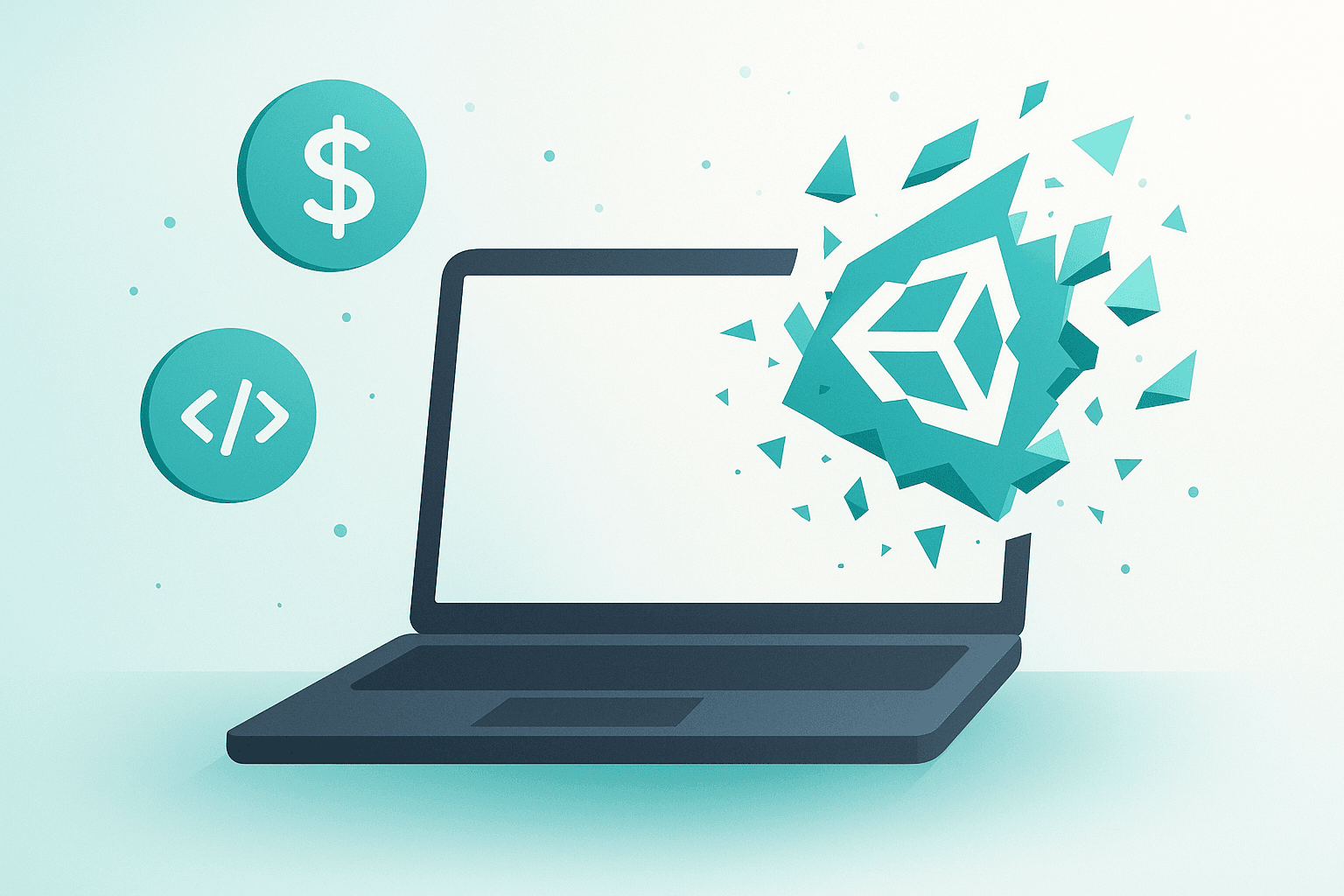
In 2023, Unity changed how developers paid to use its engine and the community erupted.
What started as a pricing update quickly turned into one of the biggest trust crises in game development history. For indie creators, it felt like betrayal. For CTOs, it exposed how fragile vendor relationships can be.
The Unity pricing controversy wasn’t just about cost. It was about control, predictability, and the risk of depending too heavily on one platform.
Now that the chaos has settled, it’s time to ask: what did developers learn and how can studios prepare for what comes next?
What Happened: The Pricing Shock That Sparked “Install-Gate”
In late 2023, Unity rolled out a new runtime fee policy. Developers would pay a small fee for every install after their games hit a certain revenue and download threshold.
That meant multiple installs of the same game could trigger repeated charges, even if those installs came from piracy, testing, or updates.
The industry reaction was instant. Reddit’s /r/gamedev and GDC panels buzzed with anger and confusion. Prominent developers like Rami Ismail called it “a trust collapse,” and small studios began reevaluating whether Unity was still safe to rely on
Reversal and Recovery: Unity’s 2024 Reset
Under heavy pressure, Unity reversed the runtime fee in 2024. The company replaced it with a subscription-based model tied to revenue tiers and team size.
The current structure looks like this:
- Unity Personal: Free for teams earning under $200K per year.
- Unity Pro & Enterprise: Paid tiers with transparent seat-based pricing.
- Custom contracts: Available for large studios with complex needs.
The new model is simpler and easier to forecast. But the damage to developer trust was already done. Many realized that a platform’s policies can shift faster than their project timelines and that’s a business risk no CTO can ignore.
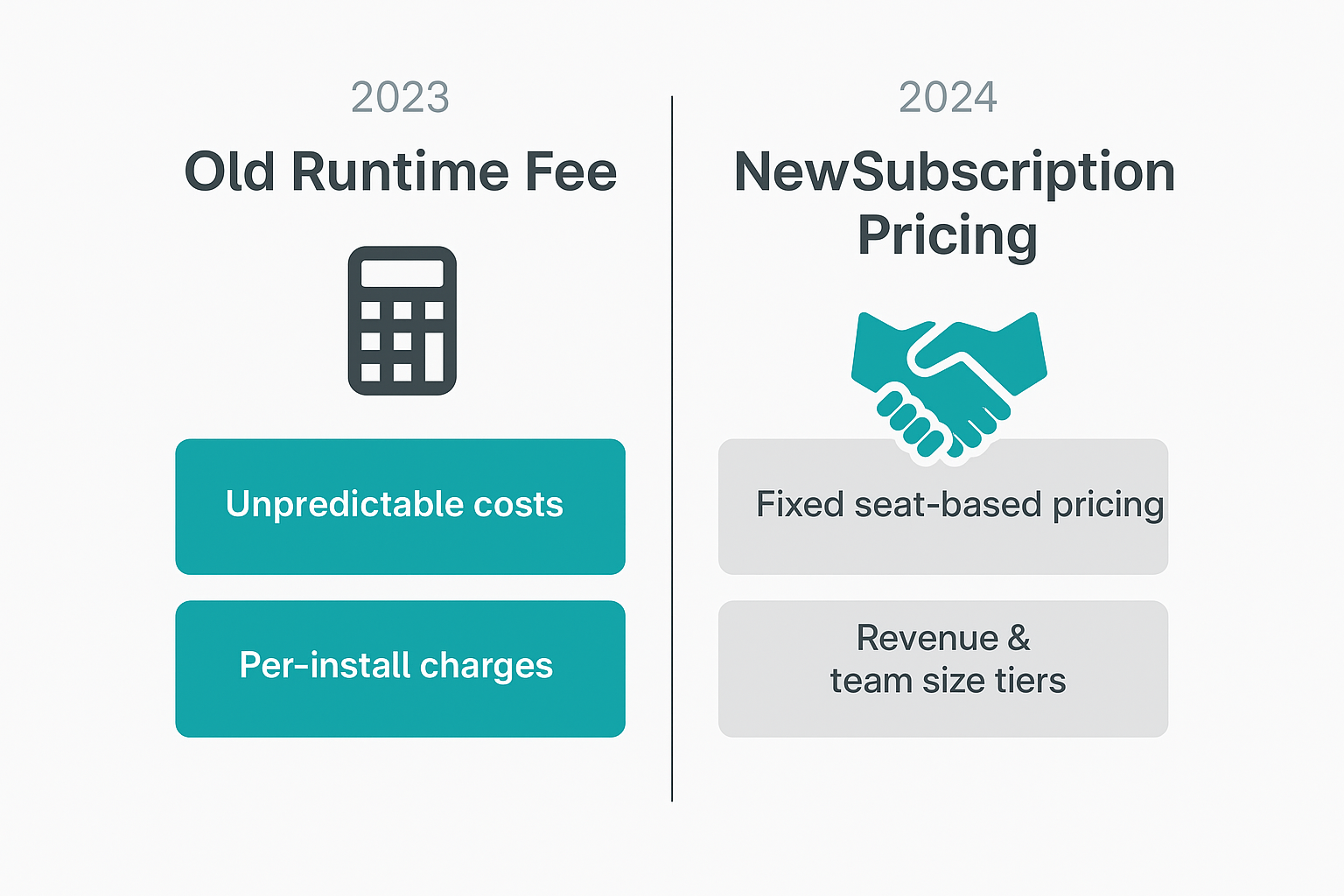
| Model | Description | Developer Impact |
| Runtime Fee (2023) | Per-install billing model | Unpredictable, caused backlash |
| Subscription (2024+) | Seat-based pricing by revenue | Transparent, easier to manage |
| Unity Personal | Free under $200K annual revenue | Low risk, limited scalability |
The Real Cost: Small Studios Took the Hardest Hit
For indie teams, even a small pricing change can make or break a project.
Take this example:
A studio with a $1.25M title and 250,000 installs would’ve paid roughly $10,000 under the old runtime fee plan. For small teams, that could mean lost QA time, fewer updates, or a delayed launch.
“Our studio had to pause marketing for weeks to re-budget around Unity’s new fees,” said Sarah Lin, co-founder of a two-person indie team in Austin.
Bigger studios with enterprise contracts recovered quickly. But for many smaller developers, the incident highlighted a harsh truth, pricing unpredictability can hurt even before a single invoice is issued.
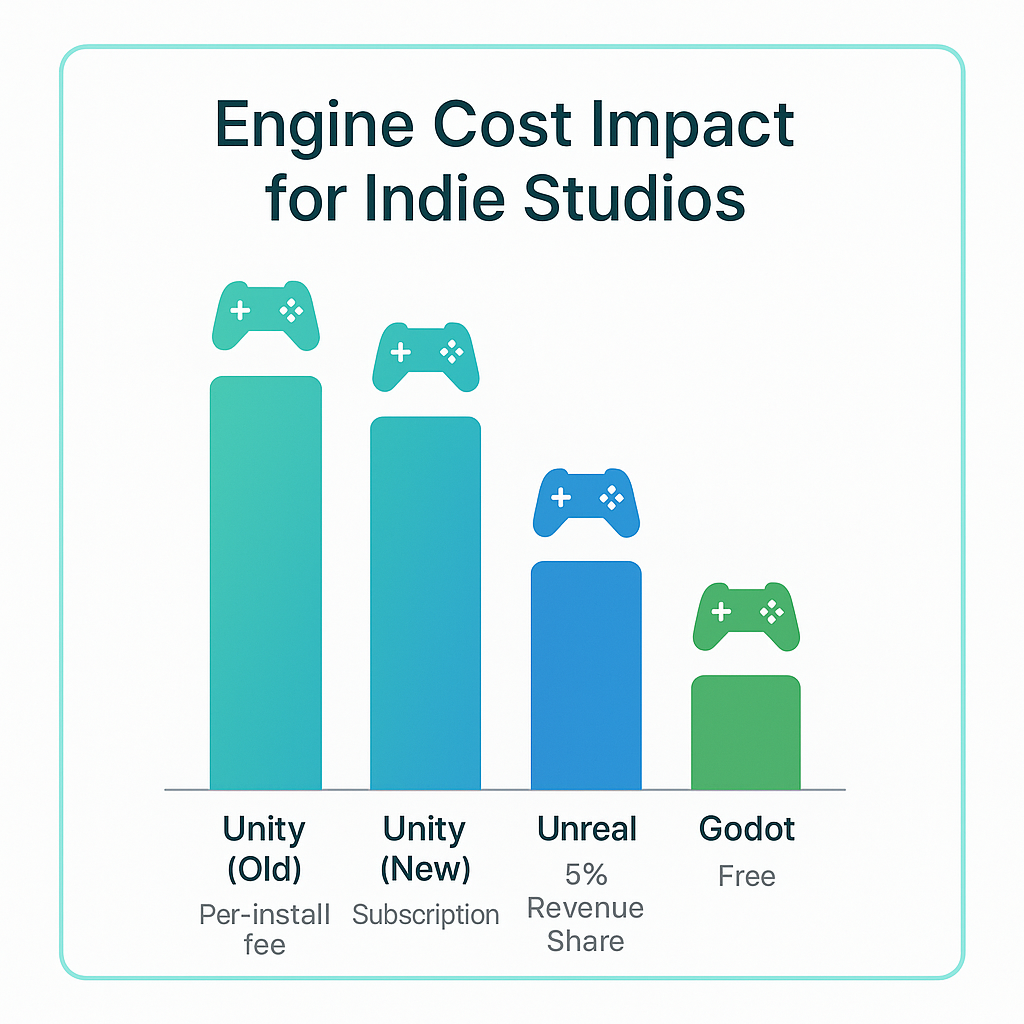
| Engine | Pricing Model | Cost Example | Best For |
| Unity (Old) | Per-install fee | ~$10K / 250K installs | Large studios |
| Unity (New) | Seat-based subscription | $2–3K per seat | Mid-sized teams |
| Unreal Engine | 5% after $1M revenue | ~$12.5K on $1.25M | Scales with success |
| Godot | Open source | Free | Indie creators |
Beyond Pricing: The Real Fallout Was About Trust
The Unity incident proved that developer relationships aren’t built on features, they’re built on trust.
After “Install-Gate,” developers began treating engines like business vendors rather than technical tools. Skills diversified. Teams learned Unreal and Godot as fallback options.
Both alternative engines saw major adoption spikes throughout 2024, not because of better tech but because of consistent communication and pricing stability.
“The best technology doesn’t always win. The one that earns developer trust does.” — Tim Sweeney, CEO, Epic Games (GDC 2024)
For many CTOs, this event reframed how they evaluate vendors. Transparency and predictability now weigh as heavily as performance metrics.
Lessons for CTOs and Founders: How to Future-Proof Engine Strategy
1. Look Beyond Features
Pricing models affect total cost of ownership as much as engine capabilities. Review licensing terms early in the planning stage.
2. Diversify Your Technical Stack
Train teams to work across Unity, Unreal, and open-source frameworks. It’s the best hedge against vendor lock-in.
3. Design for Portability
Keep code modular and assets reusable. That flexibility could save months if you ever migrate engines.
4. Monitor Vendor Stability
Include pricing and policy changes in your risk management process. A single policy shift can stall an entire roadmap.
5. Negotiate Long-Term Terms
Larger studios should secure multi-year licensing or enterprise contracts with clear pricing ceilings. Prevention costs less than migration.
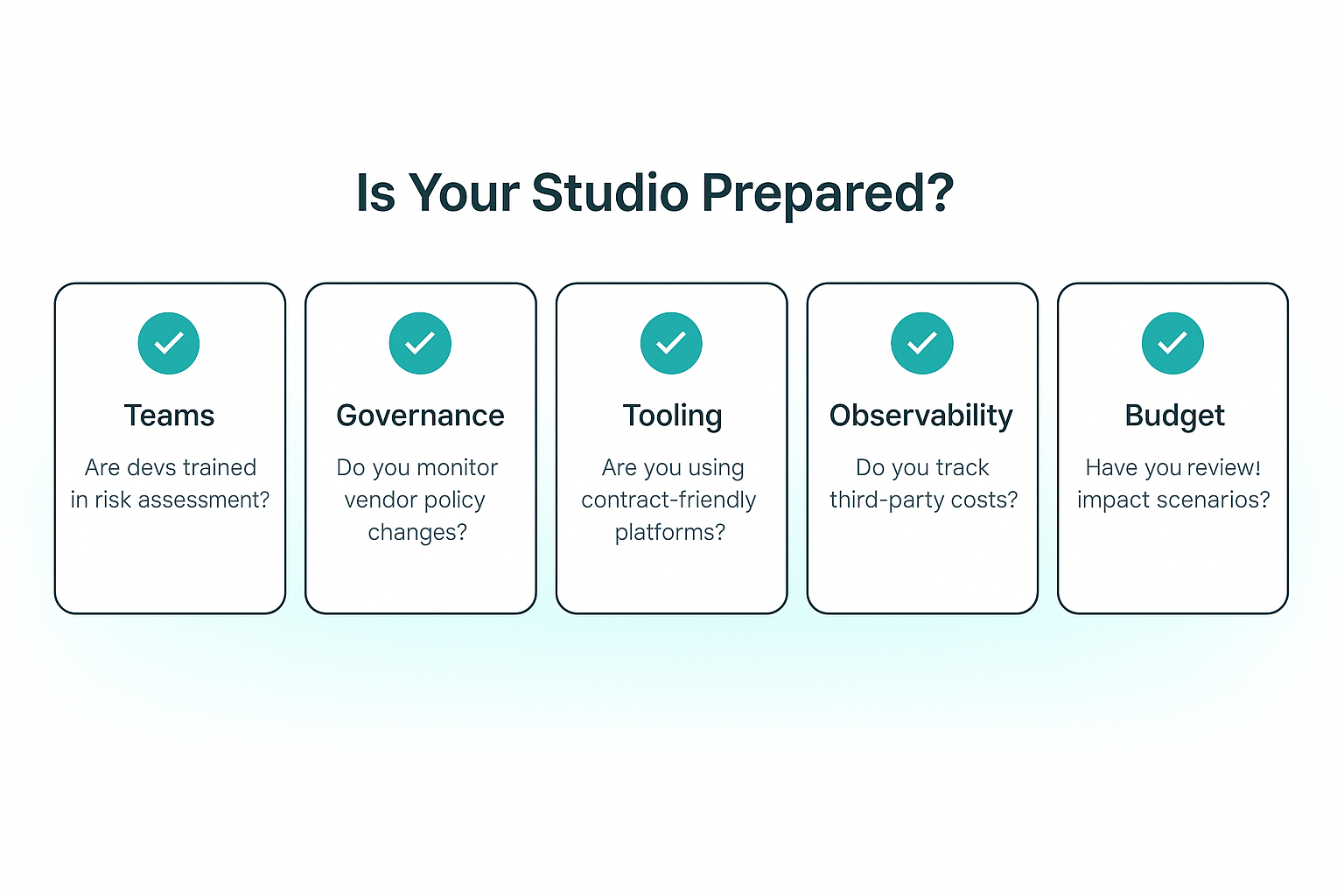
Expert Views: The Industry in 2025
Analysts now treat game engines like SaaS platforms, evolving services with recurring revenue models.
A GamesIndustry.biz 2025 survey found that 72% of studios prioritize pricing transparency when selecting new engines.
Victor Savkin, co-founder of Nx, explained:
“Tool trust is now part of developer experience. Break that, and rebuilding takes years.”
Unity remains a powerful engine, but the community now sees it through a sharper business lens, one focused on accountability, not just performance.
Unity’s Path to Rebuilding Confidence
To rebuild credibility, Unity has taken real steps forward:
- Restored clear subscription tiers with transparent pricing.
- Hosted open developer town halls for policy communication.
- Publicly committed to never reintroduce per-install fees.
A 2025 Gamasutra poll shows 58% of developers plan to continue using Unity, though most “with caution.”
Unity’s tech still leads in accessibility and cross-platform support but trust, once broken, is earned slowly.
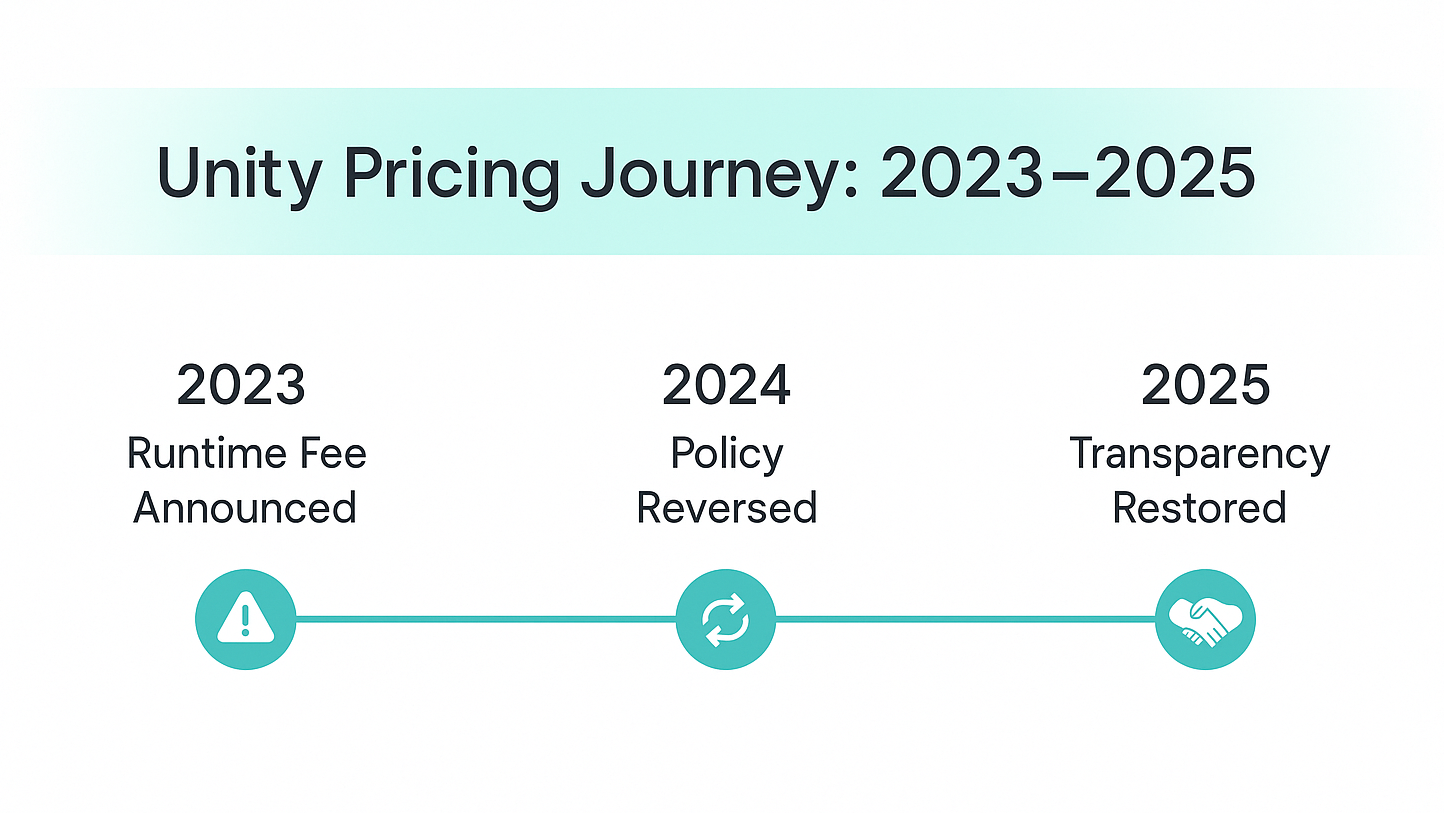
| Year | Event | Outcome |
| 2023 | Runtime fee policy announced | Global backlash |
| 2024 | Policy reversed, subscriptions added | Partial recovery |
| 2025 | Transparency initiatives | Gradual trust rebuild |
The Big Picture: Predictability Is the Real Competitive Advantage
The Unity controversy was a reminder to every tech leader: stability is strategy.
Engines are no longer just technical choices, they’re financial partnerships. Your platform’s reliability directly affects your team’s velocity and morale.
Three key takeaways:
- Transparency is non-negotiable. The best tools communicate clearly.
- Diversification reduces risk. Build systems that can move if pricing changes.
- Trust drives adoption. Consistency is the real differentiator in 2025.
Build Technology That Builds Confidence
At Mediusware, we help gaming and software teams modernize systems, manage risk, and scale with confidence.
If your studio is rethinking its tech stack or planning a cost-optimized migration, our experts can help you design a strategy that’s both stable and scalable.
Let’s talk about building tools that grow with your business, not against it.

Featureblogs
Relatedblogs
Get the best of our content straight to your inbox!
By submitting, you agree to our privacy policy.


